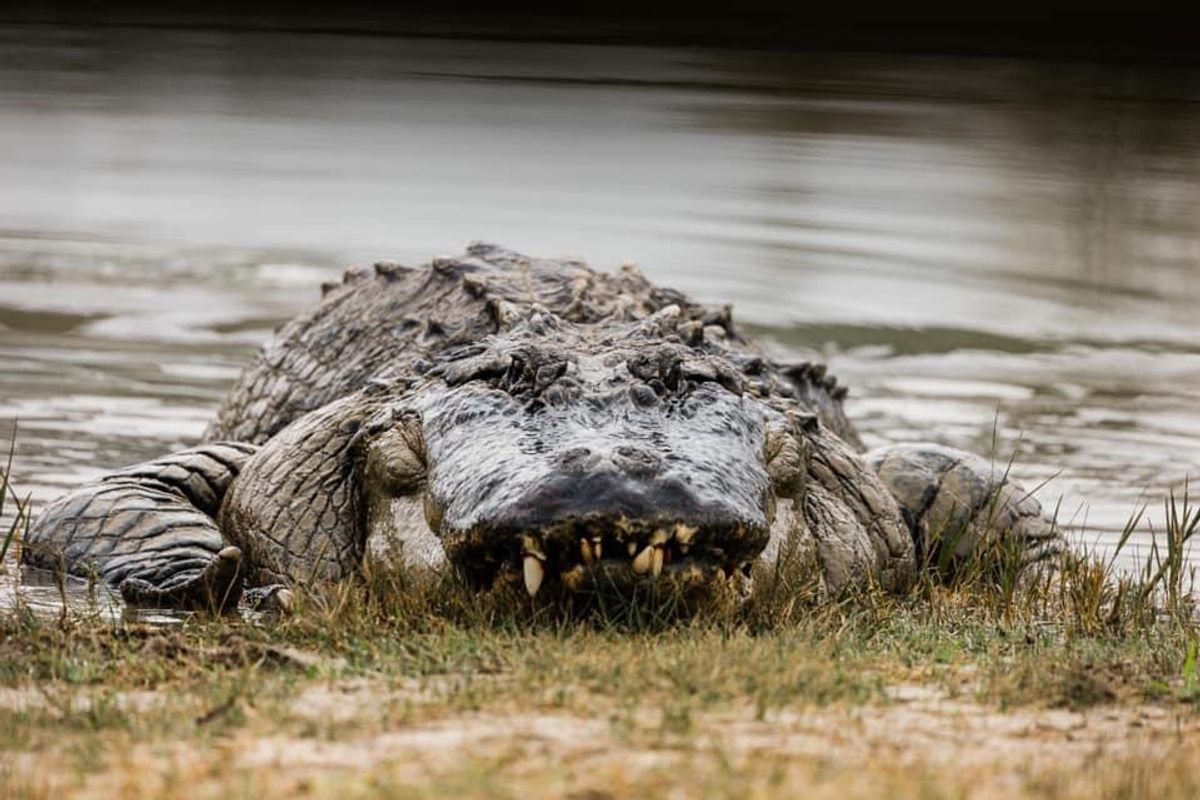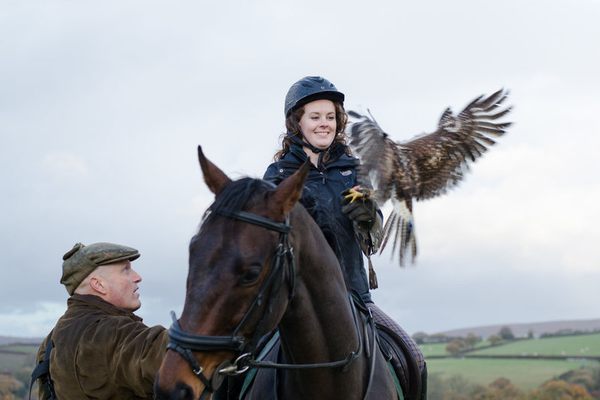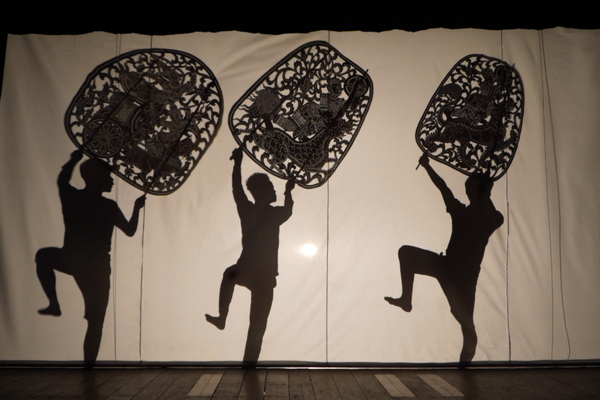The Alternative Groundhogs Vying for Punxsutawney Phil’s Weather Forecasting Job
Don’t forget about Big Al the Alligator and Scramble the Duck’s predicting powers either.
He has been variously described as “Orphie The Magnanimous,” a “reclusive oracle,” and a “world-renowned prognosticator,” offering a second opinion on the coming of spring every February 2. Just don’t call him an “alternative groundhog.” And definitely don’t call him a taxidermied, mounted groundhog wearing a tiny top hat and the occasional bowtie—although that’s exactly what he is. To his followers, who are known as the Hibernating Governors of the Slumbering Groundhog Lodge, Octoraro Orphie is “The One True Groundhog.”
“We have a lot of trouble believing people who believe in Punxsutawney Phil,” says Charlie Hart, the current leader of the lodge, which is located in Quarryville, Pennsylvania, “The way we see it, he’s an impostor.” On Groundhog Day, it’s Hart’s job to ascend the “Pinnacle of Prognostication” (a manure spreader) and, after consulting with Orphie, deliver the animal’s verdict on the duration of winter. How does Hart make this determination?
“Oh, I can’t tell you that,” Hart says with a laugh.
Orphie is not the only four-legged weathercaster offering an alternative for those not quite sold on Punxsutawney Phil’s meteorology. In Pennsylvania alone, his competition includes other groundhogs such as: Mount Joy Minnie, Grover, Poor Richard, Lawrenceville Lucy, Mt. Gretna Grady, Poppy (who appeared alongside Bill Murray in a 2020 Jeep commercial), Susquehanna Sherman, Tinicum Tim, Uni, and more.

“We don’t really have much of a beef with these other prognosticators,” says Quarryville Lodge member J.C. Bell, “other than our belief that Orphie is absolutely correct 100 percent of the time.”
Despite the fervor and lighthearted trash-talking of their adherents, these “alternative groundhogs” didn’t originate as a backlash against Phil or his skills in weather prophecy. In Pennsylvania, the tradition of the groundhog lodge, or grundsau lodsch, is rooted in the history of Pennsylvania Dutch culture.
“The legend of the groundhog originated in Europe, although there weren’t groundhogs there,” says William Donner, professor of anthropology at Kutztown University and author of the book Serious Nonsense: Groundhog Lodges, Versammlinge and Pennsylvania German Heritage. “It’s based on Candlemas, which is six weeks after Christmas and midway between the [spring] equinox and the [summer] solstice. It has a lot of symbolic meaning—it commemorates Mary bringing Jesus to the temple of Jerusalem.” Historically, the holiday also celebrated the planting of crops. Over time, Candlemas evolved into a weather-predicting event where different animals served as weather forecasters to determine the best time to sow the fields. According to the Farmer’s Almanac, this job went to bears in France and England, while in Germany, badgers did the honors.
In the 1800s, when German immigrants to Pennsylvania sought to continue their Candlemas traditions, there were no badgers to be found—but groundhogs were plentiful. With a job vacancy to fill, the newly established Pennsylvania German communities found these lowland marmots equally employable. Punxsutawney Phil and his Groundhog Club gained widespread fame primarily by being the first to the party.

“It was 1886 when the first mention of Groundhog Day appeared in The Punxsutawney Spirit, which is one of the only newspapers in Punxsutawney,” says Michael Venos, creator and curator of the website, “Countdown To Groundhog Day.” “It was maybe the next year that they actually had some sort of celebration. By the early 20th century, some of these other groundhog lodges had begun to appear.”
Despite his storied origin, the legend of Phil strains credulity. According to his website, Phil has been one continuous groundhog since 1887, one who is quite possibly undead or otherwise immortal at age 136. (The average groundhog lifespan in the wild is two to three years.)
“That’s their official line—that it’s always been the same groundhog from the beginning,” Venos says. “According to the lore, on Groundhog Day, they give him a sip of this juice, which supposedly gives him seven more years of life.”
After World War I, the phenomenon of groundhog lodges began to intersect with efforts to revive the Pennsylvania Dutch language. Today some Groundhog Day ceremonies are conducted entirely in Pennsylvania German, like Uni the Groundhog’s prediction event in Myerstown, Pennsylvania. Edwin Engle, president of Uni’s lodge, Groundhog Lodge #17, has been participating in Uni’s ceremony for 42 years. He says speaking Pennsylvania Dutch at the event helps keep the language alive. “I learned Pennsylvania Dutch from my grandfather,” says Engle. “We’ve had people bring homeschooled children to the ceremony, telling the kids ‘This involves your heritage—this is something you should know.’”
Lodge # 17’s ceremony also boasts the unforgettable display of Uni, a taxidermy groundhog named after the Union Canal, being towed down the Tulpehocken Creek in a tiny boat.

“That’s one of my favorites,” says Venos, who attended Uni’s ceremony last year. “They put this dead groundhog on a raft and pull it down the river. Then there is a guy who ‘talks’ to Uni, and gives his prediction in Pennsylvania Dutch. Another guy then translates from Pennsylvania Dutch into English.”
The tongue-in-cheek aspect of Groundhog Day has become an essential component of these traditions. The elaborate pageantry of these largely male lodges and their fraternal ceremonies walk a fine line between faux earnestness and genuine absurdity.
Take Octoraro Orphie’s tradition. In addition to performing skits and dancing a “Groundhog Jig,” new inductees to the lodge are outfitted with man-sized infant bonnets and pacifiers for their “baby year,” the lodge’s annual initiation rite. From each baby class, one is chosen for the quasi-baptismal honor of being “dunked” into the chilly Octoraro Creek on February 2nd. “They had to break the ice in the creek” for one friend’s baby year, recalls Bell.
George “Skip” Lehman, Grand Communicator for Poor Richard, a taxidermized groundhog in York, Pennsylvania, says inductees to his lodge also don bibs and baby bonnets. The act of devotion that follows, however, might make a plunge into an icy creek seem like a Caribbean vacation: initiates must plant a kiss on the long-deceased mouth of their stuffed and mounted prophet.

“We’re very safe, and he is sanitized,” says Lehman, a former local cable TV personality. “I don’t like to use the phrase ‘dry clean,’ but every other year we get him cleaned. Now, he doesn’t get dirty because he’s sealed in plastic. During COVID, we even had a little mask on him.” Lehmann, who says the funds raised from Poor Richard’s Groundhog Day ceremonies go to children’s charities such as St. Jude Children’s Hospital and Shriners Hospitals, demystified his prediction process—he consults the Farmer’s Almanac and local weathermen to make his forecast. “Then I read the predictions in poetic form,” he says. “Oh, God, they’re corny.”
Pennsylvania Groundhogs aren’t the only animals getting in on the meteorological action either. “There are a lot of forecasters, and at this point, I might have just as many non-groundhogs as I do actual, live groundhogs,” says Venos, whose website compiles and tracks all the Groundhog Day predictions. “Just when I think my list is complete, I discover a new forecaster, like the alligator from Texas whose prediction is based on whether or not he eats chicken.” That alligator is 91-year-old Big Al, a 1,000 pound specimen who resides at Gator Country in Beaumont, Texas.
“We’ve gone way past chicken at this point—he gets a nice steak dinner now,” says Arlie Hammonds, who, along with Gary Saurage, co-owns Gator Country, an adventure park and sanctuary that houses more than 450 alligators. “Whenever we do the Groundhog thing, I’ll go in the water and get him to open his mouth, and I’ll throw the steak in there. In the past, he has spit it out,” predicting six more weeks of winter (or so Hammonds attests).

Similarly, followers of Scramble the Duck in Eastford, Connecticut, consider their aquatic prognosticator to be an “accurate alternative to the groundhog.” According to Isaac Torcellini, one of Scramble’s handlers, the waterfowl “graduated from Stormy Heights Academy and became Eastford’s weather predictor shortly thereafter.”
“Scramble—and all ducks—are superior to groundhogs for a few reasons,” says Torcellini. “First, they spend time in the weather instead of hiding underground. Ducks commonly play in stormy weather and also have a sense of weather patterns for migration purposes.”
Venos and his family have even added homemade sock puppet predictors Roxbury Rita, Edgewater Elsie, and Landing Lily to the lineup. Venos says he includes the “stats” of these puppets, created by himself and his daughters, on his page.
“I’ve actually debated whether I should put those predictions in with the other ‘real’ ones,” Venos says. “But basically, as long as I’m not tipping the overall predictions one way or the other, I don’t have an issue with it. It’s another way to enjoy the day.”
Update: According to news reports on February 2, 2023, two beloved groundhogs, Milltown Mel of New Jersey and Fred la Marmotte of Quebec, died shortly before providing their spring weather forecast.
This story originally ran in 2023; it has been updated for 2023.


























Follow us on Twitter to get the latest on the world's hidden wonders.
Like us on Facebook to get the latest on the world's hidden wonders.
Follow us on Twitter Like us on Facebook